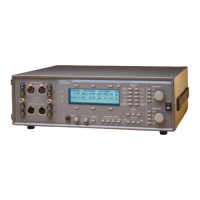Rackmounting
The ATS-1 Dual Domain may be rackmounted, either via fixed
brackets or with slide-out tracks.Refer to Appendix B for parts required
and procedures
Concepts and Terminology
Analog vs. Digital
A major division exists between analog and digital devices. Analog
audio devices store and transmit the audio signal directly. Digital
audio devices reduce the audio signal to a series of numbers and store
or transmit these numbers. Storing and transmitting sound digitally
usually results in better sound quality, although the technology for
doing this cheaply has only been developed in the last ten years or so.
Sounds can be translated from digital to analog using digital-to-analog
converters, also called D/A’s. Sounds can also be converted from
analog to digital using analog-to-digital converters, also called A/D’s (a
process commonly known as ‘sampling’). Many digital devices have
built in A/D’s or D/A’s to provide analog inputs or outputs or both.
Most analog devices only provide analog inputs and/or outputs.
Because of the fundamental differences between analog and digital
signals, they cannot be mixed. An analog output can never be
connected to a digital input, and a digital output can never be
connected to an analog input. An A/D or D/A is required to make the
translation.
Whenever an A/D or D/A is used in a measurement instrument to
translate from one domain (analog or digital) to the other, there is a
penalty in sound quality. Therefore, it is most useful to test any device
inputs or outputs directly in their own domain. This is why the ATS-1
Dual Domain has both digital and analog inputs and outputs.
One fundamental difference between analog and digital domains is
that a pair of wires (one signal and one ground) can carry only one
channel in the analog domain. In the digital domain, a pair of wires
can carry many channels of sound. For an analog stereo signal, two
2 Getting Started
Rackmounting Getting Started
2-2 ATS-1 Dual Domain User's Manual

